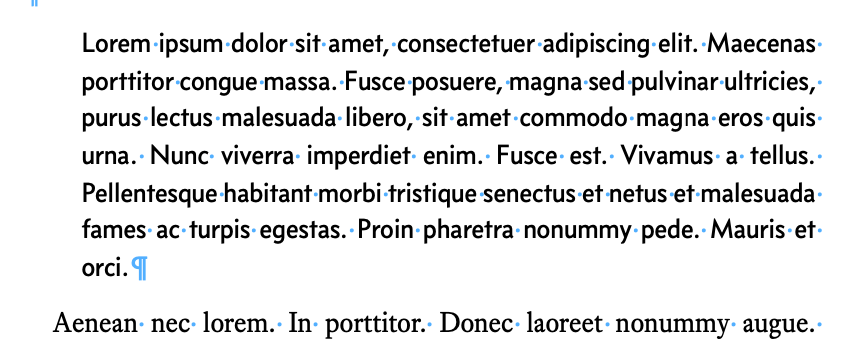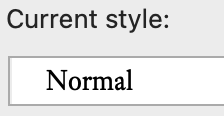If you type your own documents, and if those documents matter—if, for example, you are a lawyer—you need to know this.
First, typographyforlawyers.com. This is the web version of Matthew Butterick’s book, which I’ve been recommending since 2010.
Second, in Microsoft Word, implement paragraph styles. Here’s Butterick’s page on paragraph and character styles. It isn’t a deep dive, but it’s a good start.
Here’s what I have to say about it:
If you produce a type of document more than once, you should have a template for that type of document. “State-court motion” might be a type of document, “state-court appellate brief,” another, “cert petition” a third. All of your documents of a type will look about the same, stylistically.
Your template should have all of the paragraph styles that you are going to use in that document. Every paragraph of text in your document should be in one of those styles. If you want a paragraph in your document to look different than it does, you probably want to apply a different style, instead of changing that paragraph's characteristics ad hoc.
For example, here is a paragraph of Latinate Gibberish in my house style “Normal”:
Almost everything that I submit to a court is in “Normal.” If I want a paragraph to look different, for example to have a first line that is not indented, I will, instead of moving the indent triangle in the ruler …
… apply the house style “F2 unindented”:
(It’s called F2 unindented because I can apply it with a single keystroke.)
If I want it to be a block quote instead, I hit F4:
(You can download my House Styles Template, which I use for almost everything, here. It uses Butterick’s Equity and Concourse fonts, so it won’t look right on your screen if you don’t have those.)
If you are sure you have applied the right style (for example, "Normal," because it’s body text) and you are sure you want to change the appearance of the paragraph, you should modify the style so that all paragraphs in that style look the same. So, for example, if I want 22-point line spacing instead of 28-point, I will change the spacing in the paragraph, and then update the style to match, so that instead of this:
… I see this:
That is, I’m still using “Normal,” but now normal is defined as having exactly 22 points of line spacing.
If I want the first line of a paragraph indented, I will use a style that has the first line indented. If I want a different font, I will use a paragraph style that is defined with that font.
Styles are based on other styles, from which they inherit characteristics. For example, “F2 unindented” inherits its font and line spacing from “Normal.” If I redefine the font or line spacing in “F2 unindented” it does not affect “Normal,” but if I redefine those characteristics in “Normal,” they change in “F2 unindented” as well.
The other thing that I do is to use tables, instead of tabs or spaces, to align text. For example:
I want the signature block to the right, and could a) use tabs or spaces to move each line where I want it; or b) drag the ruler triangle to move the left margin where I want it. Both of those are ad hoc formatting, which you should not do. I could instead c) define a “signature block” style that is left aligned at the middle of the page. That’s a perfectly fine solution, but instead I d) insert a two-column table and put the text in the right column (formatted, here, in my “Table Text Left” format). I prefer (c) to (d) because sometimes I have business like this that requires two columns—a signature block for a judge on an order, for example—and using a table I can easily format the date line to the left and the judge’s signature line to the right.
I also use tables for the style of the case—the case number, name, and court at the top of the document:
The table allows me to put the lines between the fields. This is untraditional, but it’s a lot cleaner looking than the way it has traditionally been done.
Adopt these practices now. There’s a bit of a curve, but once you have incorporated them, they will make your practice a lot easier.
Below the payline, for FAFOrg supporters: FAFOrg’s templates for filing cert petitions.
Keep reading with a 7-day free trial
Subscribe to Defending People to keep reading this post and get 7 days of free access to the full post archives.














